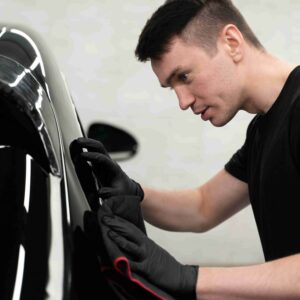Pre-owned luxury watches offer timeless elegance, heritage craftsmanship, and significant savings compared to new models. However, with their rising popularity, the market has also attracted counterfeiters. Whether you’re a seasoned collector or a first-time buyer, knowing how to authenticate a pre-owned luxury watch is essential to making a safe and informed investment. This guide walks you through expert-approved tips to ensure your purchase is legitimate, valuable, and worthy of your wrist.
Also, check custom rolex dials.
Why Authentication Matters
Authentication is crucial in the pre-owned luxury watch market for several reasons:
-
Protecting Your Investment: Genuine luxury watches retain value and sometimes appreciate over time, while fakes are worthless.
-
Avoiding Fraud: Counterfeiters are becoming increasingly sophisticated, making it easy to fall for replicas without due diligence.
-
Peace of Mind: Knowing your timepiece is authentic brings confidence, pride, and joy to your ownership.
Step 1: Buy from Reputable Sellers
The most important step in authentication starts before you even see the watch—by choosing where you buy it.
Authorized Dealers and Certified Resellers
-
Opt for retailers who are certified or partnered with watch brands.
-
Look for platforms with strict vetting processes, such as WatchBox, Chrono24, Bob’s Watches, and Tourneau.
Red Flags
-
Avoid vague seller histories, no-return policies, or pricing that seems “too good to be true.”
-
Always check online reviews and seller ratings.
Step 2: Examine the Serial and Model Numbers
Every luxury watch comes with unique serial and model numbers that help verify its authenticity.
Where to Find Them
-
Serial numbers are typically engraved between the lugs or on the case back.
-
Model numbers often appear on the watch case or accompanying paperwork.
What to Check
-
Ensure the numbers are laser-etched, not printed or shallowly engraved.
-
Cross-reference them with the manufacturer’s database or consult with a certified dealer.
Step 3: Inspect the Dial and Branding Details
Luxury watches are known for their precision, and even the tiniest error in the dial or logo can be a giveaway.
What to Look For
-
Logo Precision: Authentic watches have perfectly aligned and engraved logos. Any blurriness or misalignment is a red flag.
-
Typography: Font sizes and spacing should be consistent. Counterfeit dials often have off-centered or irregular text.
-
Luminosity: Most genuine luxury watches use high-quality luminous material on the hands and markers.
Step 4: Examine the Movement
The movement (the inner mechanism) is the heart of a luxury watch and the hardest thing to counterfeit.
Open Case Back
-
Some watches have transparent backs to display the movement. Authentic Swiss watches have intricate, clean, and engraved components.
Closed Case Back
-
If the case back is sealed, a professional watchmaker can open it to inspect the movement.
Pro Tip
-
If the seller won’t allow a movement inspection or lacks service history, that’s a major red flag.
Step 5: Evaluate the Watch Weight and Materials
Luxury watches are crafted from premium materials and will feel heavier and more substantial than their counterfeit counterparts.
Key Elements
-
Heft: High-grade steel, gold, or titanium gives the watch a noticeable weight.
-
Finishing: The watch case, clasp, and bracelet should be meticulously finished with no rough edges or discoloration.
-
Glass: Most luxury watches use sapphire crystal, which is scratch-resistant and ultra-clear. You can test sapphire glass using a water droplet test or by tapping it for a distinct sound.
Step 6: Inspect the Crown and Case Back
Often overlooked, the watch crown (winding knob) and case back offer several authentication clues.
Crown
-
Should have the brand’s logo and feel smooth when wound.
-
Fake watches often have flimsy crowns with incorrect logos or sizes.
Case Back
-
Many luxury brands engrave model numbers or hallmarks on the back.
-
Excessive engravings, transparent stickers, or typos signal inauthenticity.
Step 7: Review the Documentation and Original Packaging
A genuine pre-owned watch often comes with paperwork and packaging, which can be a helpful part of the authentication process.
Key Documents
-
Certificate of Authenticity or Guarantee Card
-
Instruction manuals with matching model information
-
Service records from authorized centers
What to Watch Out For
-
Poor-quality printouts or generic-looking warranty cards
-
Inconsistent serial numbers across documents and the watch itself
Step 8: Consult with an Independent Watchmaker
When in doubt, consult a certified horologist or an authorized brand service center for a thorough inspection.
Benefits of a Professional Authentication
-
They can open the watch to inspect the internal mechanism.
-
They’ll verify materials, engravings, and movement types.
-
They may issue a certificate confirming the watch’s authenticity.
Step 9: Use Online Authentication Tools
Some luxury watch brands now offer online databases or apps to verify serial numbers and purchase history.
Examples
-
Rolex’s warranty card verification tools
-
Omega’s serial number check
-
WatchCertificate® and other independent platforms
While not foolproof, these tools offer additional verification layers.
Step 10: Trust Your Instincts
If something feels off—whether it’s the seller’s behavior, the price, or the condition of the watch—listen to your gut.
Questions to Ask Yourself
-
Why is the price significantly lower than market value?
-
Is the seller transparent and responsive?
-
Do I feel confident about this purchase?
If any answer gives you pause, walk away or seek expert advice.
Final Thoughts
Purchasing a pre-owned luxury watch is a rewarding experience, but only if done with care and vigilance. Authentication isn’t just about confirming a watch’s legitimacy—it’s about preserving its value, ensuring its quality, and protecting yourself from fraud.
By following these steps—from checking serial numbers and movement to consulting professionals—you can confidently invest in a timepiece that’s not only stunning but truly authentic.
Whether you’re expanding your collection or buying your first Rolex or Omega, let your watch be a symbol of sophistication, not a source of regret. Always remember: An authentic watch tells more than time—it tells your story.





